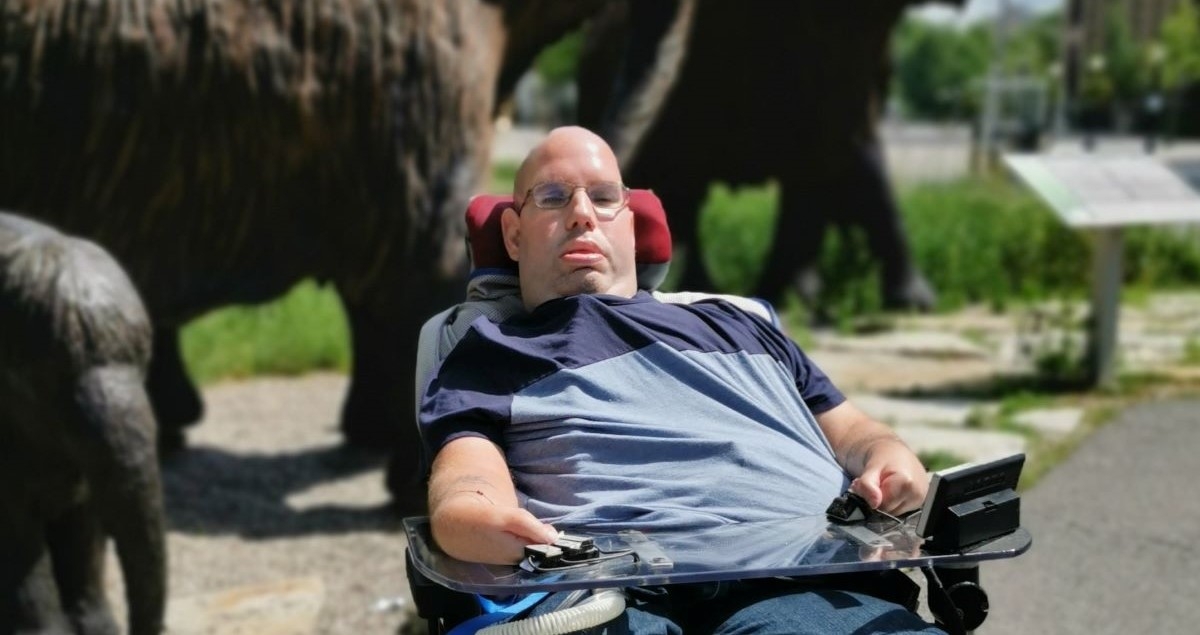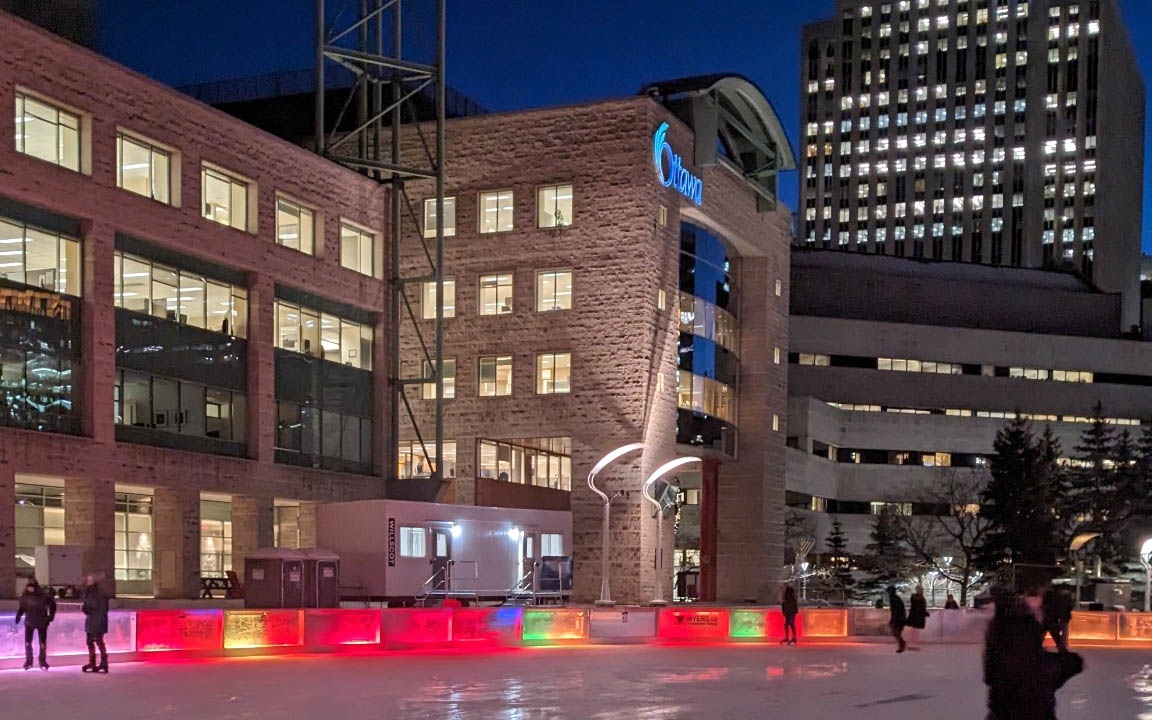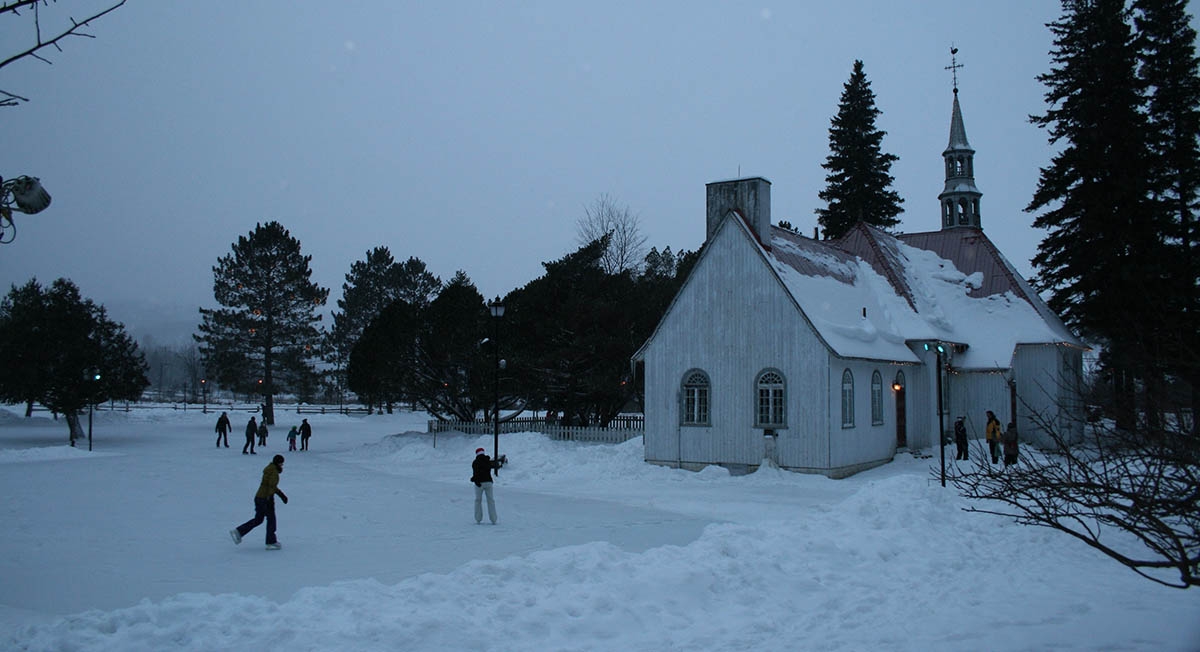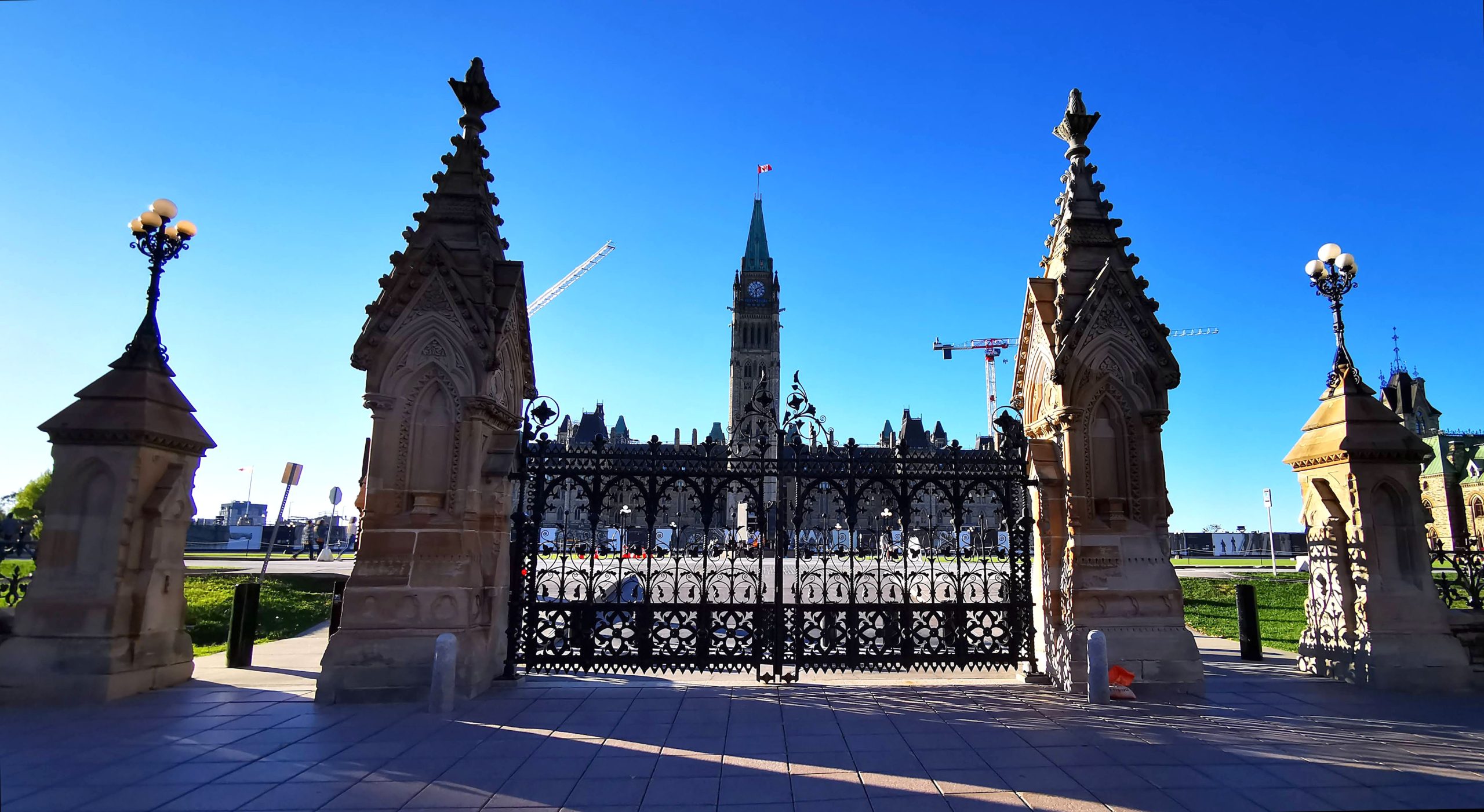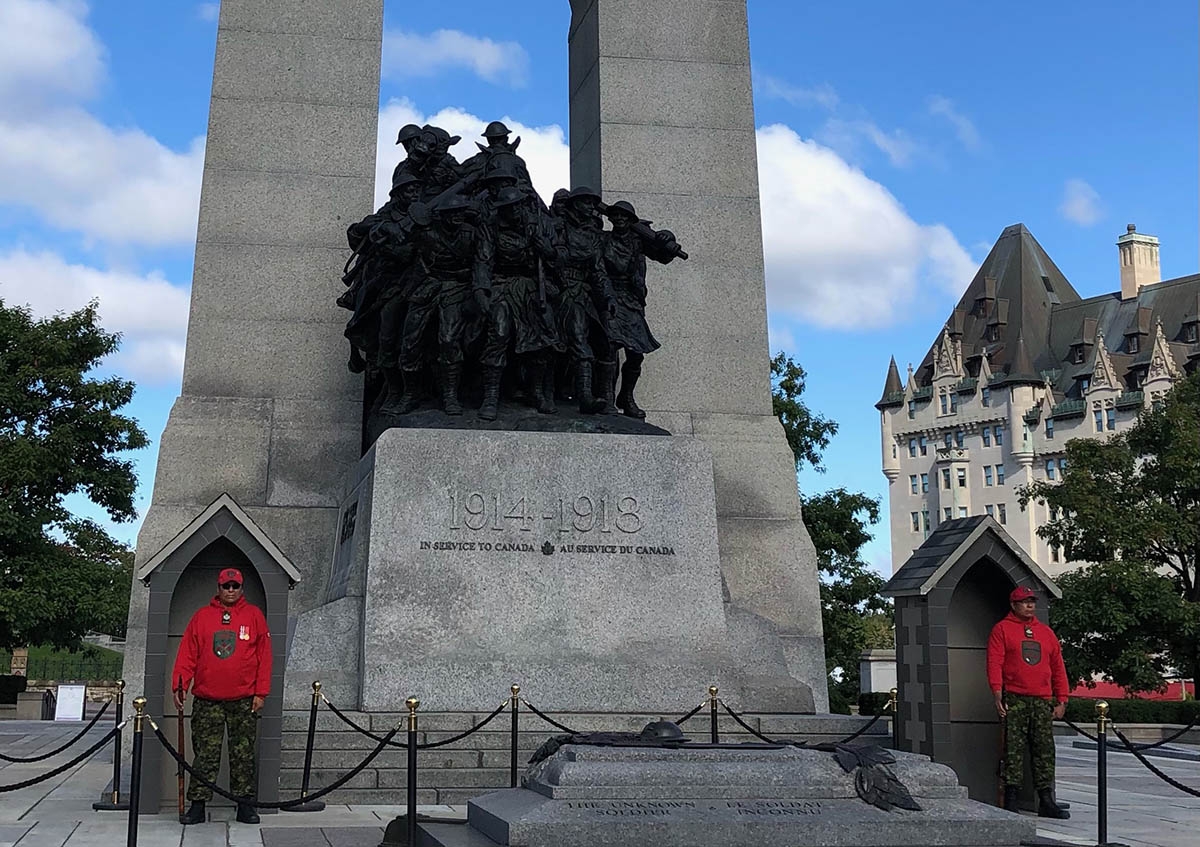
Indigenous Monuments and Reconciliation
ABOVE: Canadian Rangers stand as honour guards at the Tomb of the Unknown Soldier during the first National Day of Reconciliation. (ALL PHOTOS: Dan McCarthy)
Amongst the 94 Calls to Action contained in the 2015 final report of the Truth and Reconciliation Commission of Canada was that the federal government establish a statutory holiday to: “honour Survivors, their families, and communities, and ensure that public commemoration of the history and legacy of residential schools remains a vital component of the reconciliation process.” And so it was on Thursday last that downtown Ottawa was awash in orange shirts, scarves, and hats as Canadians of all backgrounds joined Indigenous peoples in a day of sorrow, respect, reflection, and commemoration of those who endured their time in residential schools, and in solemn remembrance of those children who died, many of whom lie in unmarked graves. A solemn remembrance ceremony on Wednesday evening by the Eternal Flame on Parliament Hill became a much larger gathering on Thursday, culminating in a march from the Hill to Confederation Park for music, dance, and displays.
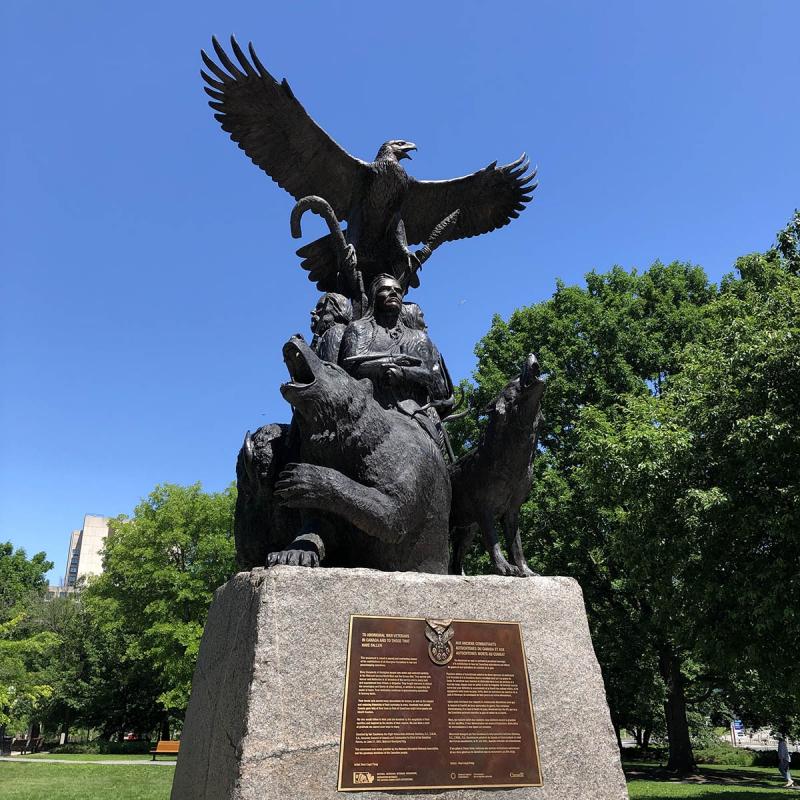
ABOVE: The National Aboriginal Veterans Monument in Confederation Park.
As I walked the downtown core, Parliament Hill, and across the Alexandra Bridge to the Museum of History, I was struck again by the paucity of statues and monuments dedicated to Indigenous individuals and events, in addition to the lack of resources to plan such a walk of discovery. Fronting Elgin Street at Confederation Park is the impressive National Aboriginal Veterans Monument. Unveiled in 2001, the monument—topped by figures of the grizzly, caribou, buffalo, and wolf, with an eagle aloft—honours the contributions of nearly 12,000 Indigenous people over two World Wars and the Korean War. Less conspicuous in the park is a totem pole carved by Kwakiutl artist Henry Hunt and donated by the province of British Columbia in 1971 to commemorate the centennial of its joining Confederation.
Walking up Elgin Street, the ‘lantern’ at the National Arts Centre was lit in orange as a series of messages—truth is medicine’ and ‘every child matters’—flashed on the large screen. At the National War Memorial, Canadian Rangers, reservists in the Canadian Armed Forces, formed the honour guard at the Tomb of the Unknown Soldier. Most Rangers live north of 60, and many come from Indigenous communities. I spoke with one of the Rangers, who said he had served ten years, and it was his first trip to Ottawa. He expressed his pride as an Indigenous soldier standing guard that morning. I saw him again later that day as he and his fellow Rangers posed for pictures with children as the crowds marched down to Confederation Park.
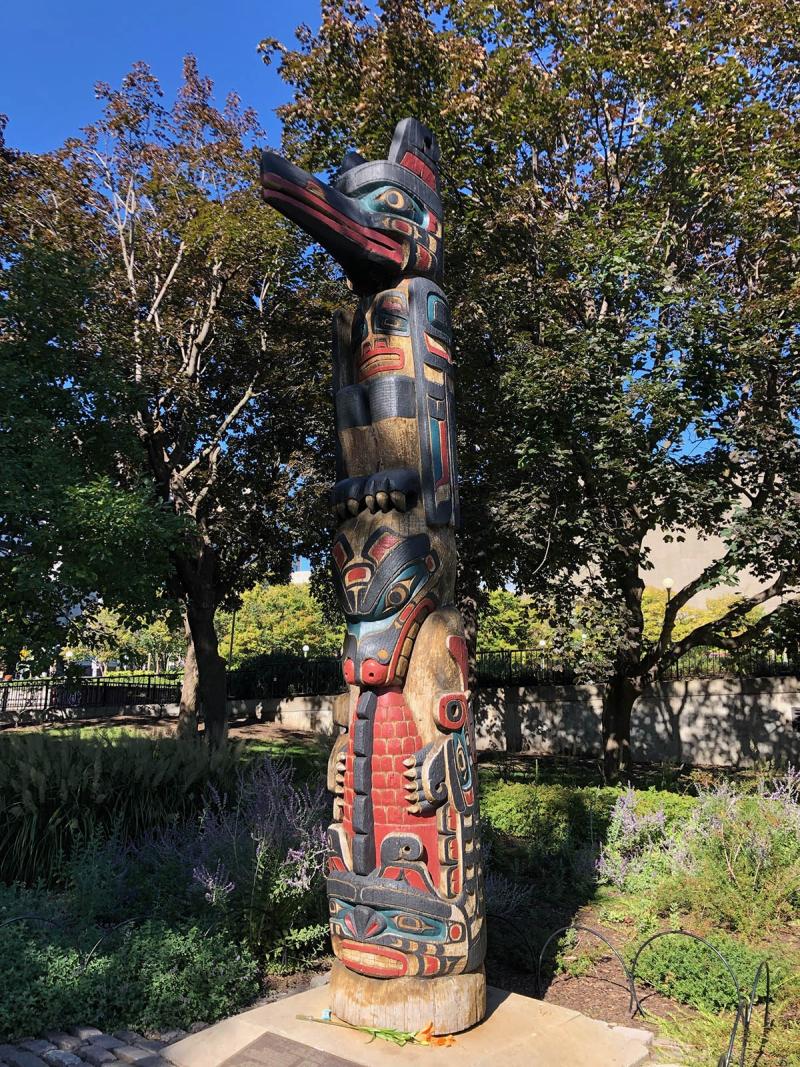
ABOVE: Totem pole in Confederation Park by Kwakiutl artist Henry Hunt.
Walking off the square towards the Chateau Laurier is The Valiants Memorial, a series of statues and busts of 14 men and women chosen for their heroism at critical points in Canada’s conflicts. One is of an Indigenous person, Thayendanegean, better known as Joseph Brant, who was the war chief of the Six Nations and led his forces in support of the British during the American revolution. Without any disrespect to those honoured, I thought of Francis Pegahmagbow of the Shawanaga First Nation near Parry Sound, thrice awarded the Military Medal in WW1, and Canada’s most decorated Indigenous soldier. Pegahmagbow returned home to racism and subservience to an Indian Agent. Eighty-five years later, he served as an inspiration for Joseph Boyden’s novel Three Day Road.
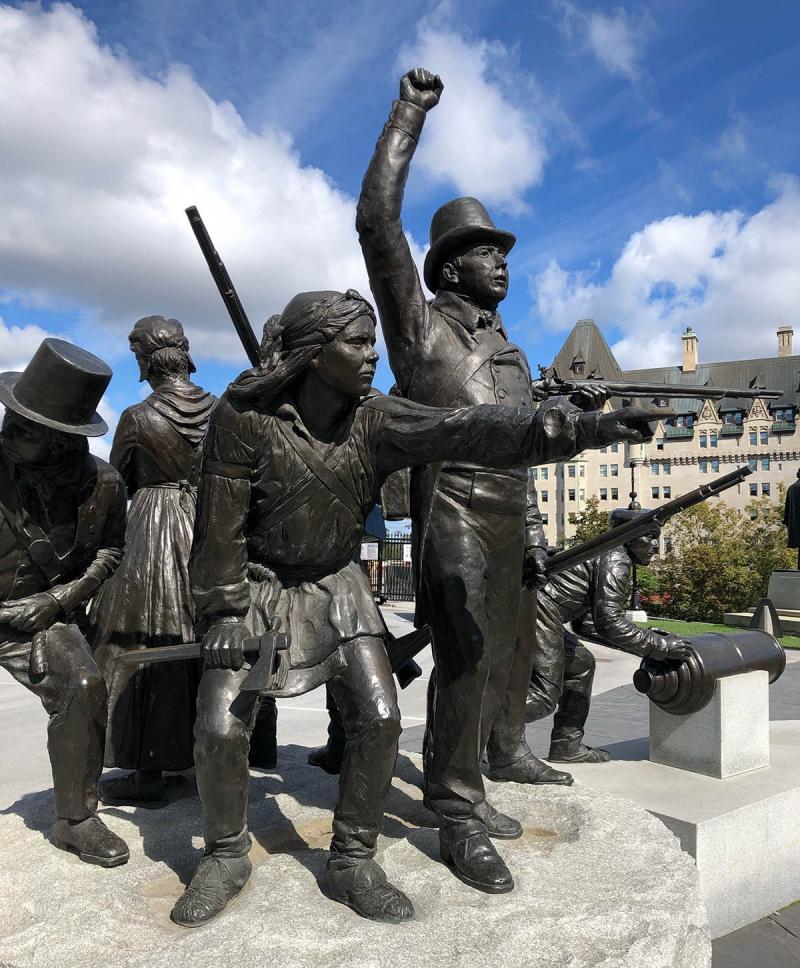
ABOVE: The War of 1812 memorial on Parliament Hill.
There are slightly fewer lions than Indigenous persons cast in bronze on Parliament Hill. The War of 1812 memorial includes a Metis fighter firing a cannon and a First Nations warrior looking into the distance. That’s it. Apparently, no Indigenous figures of national significance have arisen in the 207 years since that war ended. Smaller visuals surround the Hill, including a relief on the facade of the old Bank of Montreal building on Wellington Street (now part of the Sir. John A. Macdonald Centre) and a ‘hunter with deer’ at 55 Metcalfe Street. Directly across Wellington Street from the Peace Tower, 20 years after the US opened its ‘new’ embassy by the Market, sits the unfulfilled promise of the Indigenous Peoples Space.
I scoured Major’s Hill Park for the statue of the Anishinabe Scout, which sat at the base of the Samuel de Champlain sculpture at Nepean Point for nearly a century. Deemed inappropriate as the bronze sculpture appeared to kneel to Champlain, the figure was moved a decade ago across the street to the park, where it was placed looking west towards Parliament Hill. The National Capital Commission has since moved the statue to storage pending the re-development of the pedestrian walkway in that area. I would suggest placing the Scout within feet of patio umbrellas from the adjacent terrace was equally inappropriate!
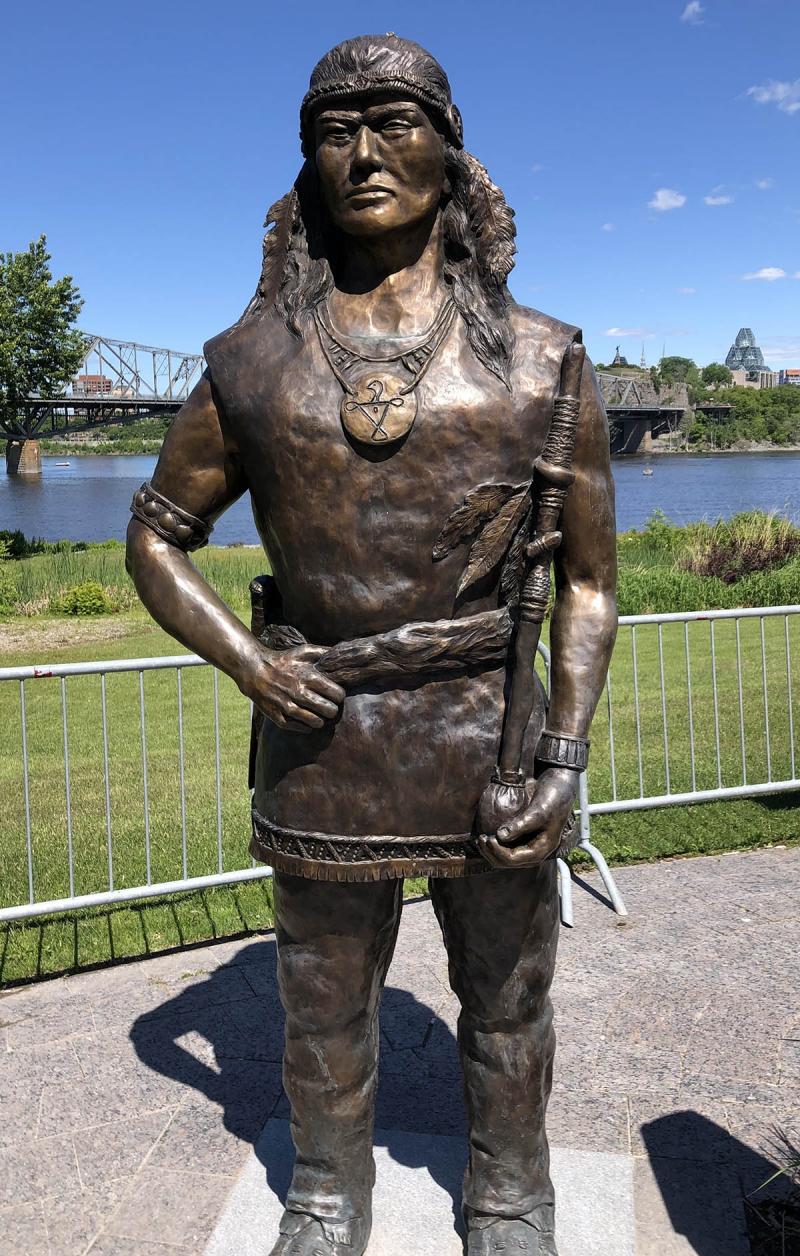
ABOVE: The statue of Algonquin Chief Tessouat stands on the grounds of the Museum of History.
Crossing to the National Art Gallery, one sees The Three Watchmen sitting on a traffic island, looking for “danger emanating from both the supernatural and the everyday worlds.” Several historical plaques and pictograms overlook the Kichi Zibi (great river) as named by the Algonquin Anishinabe people highlighting the area’s history from the Indigenous perspective, but the displays are static and one-dimensional. A statue of Algonquin Chief Tessouat stands on the banks of the river below the Museum of History as he might have in life nearly 400 years ago. The plaque by the statue states in part, “the one-eyed chief was an undisputed leader and warrior feared by his enemies. A man of vision, he was a party to the first major alliance between the First Nations and the Europeans”.
While condo development continues apace at the Zibi site overlooking Chaudière Falls, site remediation and planning at the sacred Victoria Island for a “place of special significance in the Capital for Indigenous peoples and their cultural traditions” proceeds at that of a snail. The island will not re-open until 2025, and a master plan for the Island in consultation with the Algonquin Anishinabeg Nation is part of the NCC’s plans for the Capital Region stretching out to 2067! But hey, we can always have a cold one in the interim at an NCC bistro by the Canal.
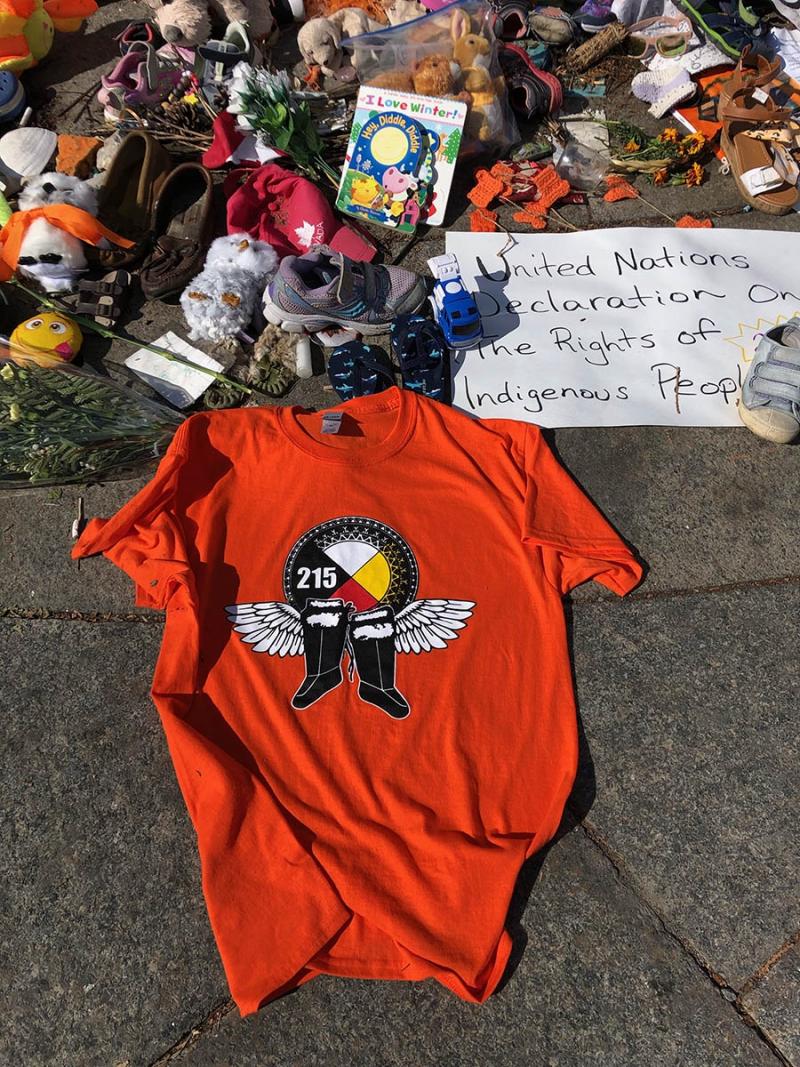
ABOVE: A makeshift memorial to the victims of residential schools on Parliament Hill.
Consultations with and guidance from Indigenous peoples are paramount on projects, and I understand these will take time to ensure their perspective shapes the telling of their history. It is not my place to say what the story of our collective history is. But the NCC can take some small steps to guide Ottawans and tourists alike through a new voyage of discovery in this city. For example, years ago, the NCC produced a self-guiding booklet entitled Discover the Hill. With Indigenous input—or indeed contract out the work entirely to First Nations—produce an Indigenous Ottawa Walk or similarly titled resource. Pair it with a free self-guided app, voiced by prominent Indigenous persons, complete with maps, photos, and in-depth historical information. Tell the full story of the Anishinabe Scout, for instance. And beef up the NCC website with more information on Indigenous monuments and statuary in the region.
The Government of Canada should accelerate consultations with First Nations on realizing call to action number 81—the establishment of a “publicly accessible, highly visible, Residential Schools Monument in the city of Ottawa.” Parliament conceived, maintained, and gave cover to those who perpetrated a system that brought such destruction and loss to Indigenous families and communities. Therefore, this monument should be on Parliament Hill. The timing is right as the Hill undergoes a decade-long, billion dollars plus renovation. Re-sod the small parking lot adjacent to the West Block and move the statue of Sir Robert Borden to another Hill location. Relocate the vehicle security facility and incorporate the nearby treed hill into the monument’s design. This would allow a prominent place on the Hill for such a monument of national significance, with views to both Wellington Street and Kitchi Zibi.
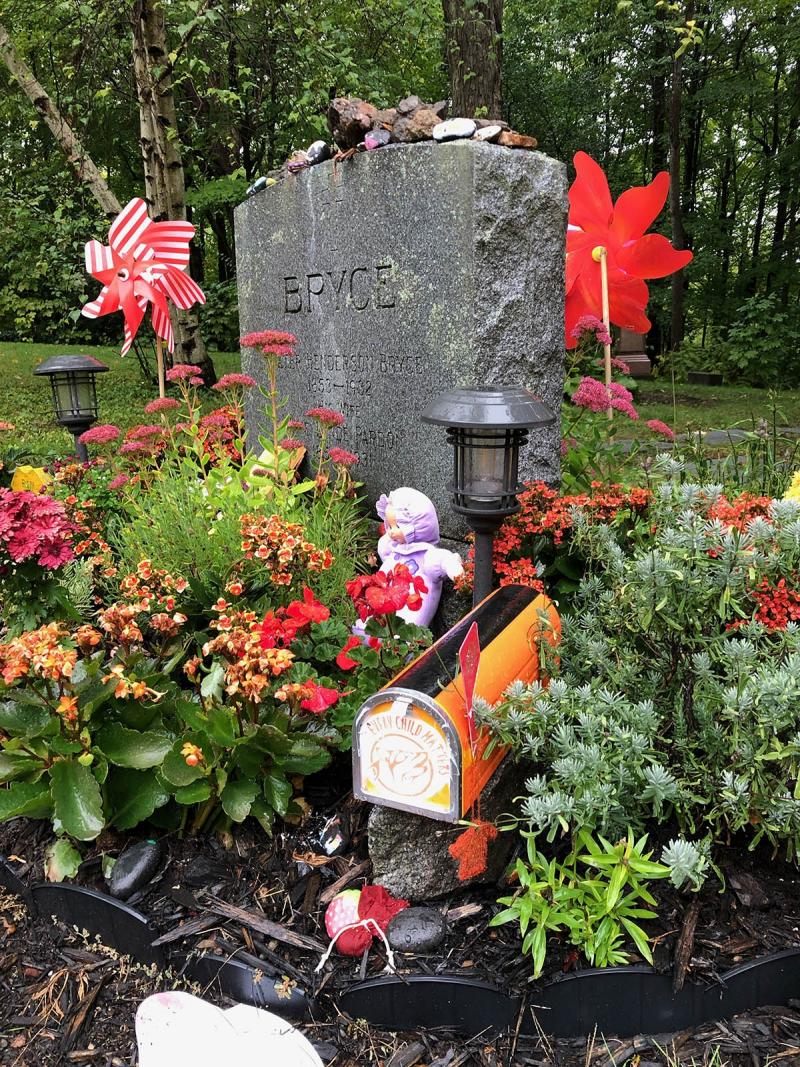
ABOVE: The gravesite of Dr. Peter Bryce, who, in 1907, reported on the shocking death rates of children in the residential schools.
The first National Day for Truth and Reconciliation has passed and left a reflective imprint on most Canadians. The most poignant public remembrances are citizen-driven, whether the children’s shoes on the Hill or the quiet gravesite of Dr. Peter Bryce MD in a shaded glade in Section 60 of Beechwood Cemetery. Now surrounded by flowers, feathers, and painted stones, the gravesite also includes an orange mailbox where visitors can leave messages of grief, condolence, and commitments to change hearts and minds. Dr. Bryce saw the evils of the residential school system and raised the alarm more than a century ago, with his courage costing him his career. The system would remain for another 70 years, and children continued to die. We all know what happened. It’s past time to tell the full story of our Indigenous peoples, and the NCC should take a greater lead in the National Capital Region.

